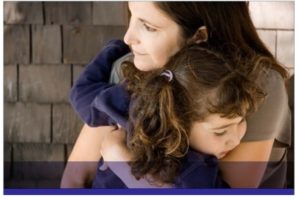A resource collection compiled by and for Parent Centers.
Coordinated by the Region 2 Parent Technical Assistance Center @ ECAC
September 2018
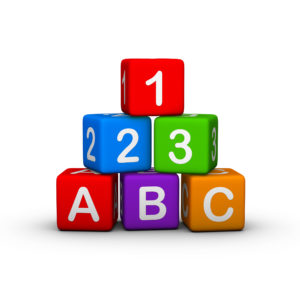 The contents of this page will help Parent Centers, families, and others build their knowledge base and understanding of what trauma is, what kinds of trauma there are, and how it affects children in particular. There’s a section of Spanish language (and other language) materials on trauma, too.
The contents of this page will help Parent Centers, families, and others build their knowledge base and understanding of what trauma is, what kinds of trauma there are, and how it affects children in particular. There’s a section of Spanish language (and other language) materials on trauma, too.
We’ve divided the resources by their FOCUS for easier reference, as follows:
- Introductory Information on Trauma
- Adverse Childhood Experiences (ACEs)
- Websites of Note
- How Parents and Caregivers Can Support and Help Children
- The Value of Resiliency
- Info in Spanish and Other Languages
This web page of resources is the beginning part of the larger Resource Collection on Trauma-Informed Care, a mini-library put together through a collaboration of RPTAC 2 @ ECAC, CPIR, and a review and development team of Parent Center staff.
_____________________________________
Introductory Information on Trauma
Children and Trauma: What Can You Do?
This 1-page fact sheet comes from Formed Families Forward, the CPRC serving foster families in Northern Virginia. The fact sheet provides information to understand the types of trauma, potential responses to the trauma, and ways to support a child who has experienced trauma.
https://www.formedfamiliesforward.org/wp-content/uploads/2018/04/trauma-factsheet-FFF-what-can-you-do.pdf
Infographic | What is Childhood Trauma?
This is a 7-page infographic booklet in PDF format (1.4 MB) from the National Institute for Trauma and Loss in Children (TLC).
https://www.starr.org/sites/default/files/TLCtrauma.pdf
What is Child Trauma?
This online resource briefly describes what childhood trauma is and then includes sections about traumatic events (what are they?), ACES, childhood traumatic stress, the signs and symptoms of traumatic stress, and the 3 “E”s of trauma. The article then has multiple branches you can follow to find additional information.
http://cctasi.northwestern.edu/family/child-trauma/
Types of Trauma and Violence
Learn about the different kinds of traumatic events that can impact the behavioral health of individuals, families, and communities. This succinct, albeit grim, list of types of trauma comes from SAMHSA, the Substance Abuse and Mental Health Services Administration. The list includes many links to hotlines and other federal resources of information and response.
https://www.samhsa.gov/trauma-violence/types
Signs of Trauma in Children
(Also available in Spanish: Señales de trauma en los niños)
After a disturbing event or tragic loss in the lives of children, parents and teachers do their best to help kids cope with their grief and anxiety in a healthy way. This article from the Child Mind Institutes provides tips on how best to engage kids in a calm and supportive dialog about their feelings. It’s also important to recognize the signs of unhealthy coping that would suggest a visit with a professional might be needed.
https://childmind.org/article/signs-trauma-children/
![]() Understanding Trauma | Video
Understanding Trauma | Video
This 10-minute video is the first in a 3-part series of the CPRC in northern Virginia, Formed Families Forward. It comes with several accompanying fact sheets and handouts. You can watch the video and download all the handouts at the link below.
https://www.formedfamiliesforward.org/resource_category/trauma/
Through Our Eyes: Children, Violence, and Trauma | Video
This 8-minute video says it all and is an excellent resource to use with staff, schools, and community members. It discusses how violence and trauma affect children, including the serious and long-lasting consequences for their physical and mental health; signs that a child may be exposed to violence or trauma; and the staggering cost of child maltreatment to families, communities, and the nation. Victims lend their voices to this video to provide first-hand accounts of how their exposure to violence as children affected them.
https://www.youtube.com/watch?v=z8vZxDa2KPM
What is Trauma? | Video
This 4-minute video set to music (no spoken words) uses pictures and short text to show different kinds of trauma, trauma’s impact, and what it means to be “trauma-informed” in how you respond to others. From the Trauma Informed Care Project. On YouTube, at:
https://www.youtube.com/watch?v=6BdW6tAb-5M
InBrief: The Science of Neglect | Video
This 6-minute video from the Center on the Developing Child at Harvard University provides a simply-put explanation of how neglect affects young children and changes their brain architecture and development.
https://www.youtube.com/watch?v=bF3j5UVCSCA
How to Manage Trauma
This 2-page attractive infographic from the National Council for Behavioral Health identifies the main causes of trauma, provides data on its frequency, lists its common symptoms and helpful coping strategies, and offers suggestions for how to talk to your doctor about trauma. Great for sharing with families and others.
https://www.thenationalcouncil.org/wp-content/uploads/2013/05/Trauma-infographic.pdf
The 12 Core Concepts: Concepts for Understanding Traumatic Stress Responses in Children and Families
A 5-page summary of core concepts, from the National Child Traumatic Stress Network. Available in a
https://www.nctsn.org/sites/default/files/resources//the_12_core_concepts_for_understanding_traumatic_stress_responses_in_children_and_families.pdf
Adverse Childhood Experiences (ACEs)
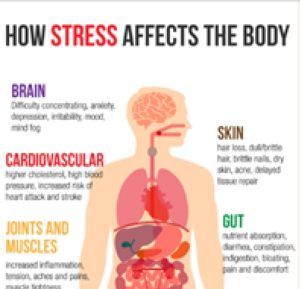 Flyer | Adverse Childhood Experiences: Looking at How ACEs Affect Our Lives and Society
Flyer | Adverse Childhood Experiences: Looking at How ACEs Affect Our Lives and Society
Learn more about the original ACE study, including its definitions, study demographics, and major findings. There’s also a 6-page flyer version in PDF (2.1 MB). From the Centers for Disease Control and Prevention.
https://vetoviolence.cdc.gov/apps/phl/resource_center_infographic.html
InBrief | The Impact of Early Adversity on Children’s Development
(Available in Spanish)
This 2-page article summarizes research on the impact of adversity on children and the enormous importance of early intervention and stable supporting relationships.
https://developingchild.harvard.edu/resources/inbrief-the-impact-of-early-adversity-on-childrens-development/
Blog | The Developing Brain and Adverse Childhood Experiences (ACEs)
Given the explosion in scientific research now possible with imaging technologies, such as fMRI and SPECT, experts can actually see how the brain develops. This helps explain why exposure to adverse childhood experiences can so deeply influence and change a child’s brain and thus their physical and emotional health and quality of life across their lifetime. This blog post at ACES Connection is long but very interesting and thorough, with lots of explanatory graphics.
https://www.acesconnection.com/blog/the-developing-brain-and-adverse-childhood-experiences-aces
Video Series | Bomb in the Brain
This series of 6 indepth videos discusses the effects of child abuse and how adverse childhood experiences affect young children. Great for staff development! From Freedomain Radio.
https://nortonsafe.search.ask.com/videos?o=APN12175&l=dir&qo=pagination&geo=us&locale=en_us&doi=2019-01-10&p2=%5EEQ%5Ech00us%5E&q=Bomb+in+the+Brain+video+series&campaignId=cmpgn-default&qsrc=998&page=1&ctype=videos&videoId=bwqQtgsw2gI
 Websites of Note
Websites of Note
Be sure to visit these websites, which focus specifically on trauma and its impact on children and others. You’ll find lots of short reads, indepth articles, a network of professionals skilled in addressing trauma, videos, presentations, and more. Please note that websites specific to trauma-informed care and becoming a trauma-informed organization are listed separately–on the Trauma-Informed Care page in this suite.
National Child Traumatic Stress Network
The National Child Traumatic Stress Network (NCTSN) was created by Congress in 2000 as part of the Children’s Health Act. Since then, it’s grown to 86 currently funded centers and over 150 Affiliate (formerly funded) centers. The website offers indepth information about childhood trauma, treatments and practices, trauma-informed care, and Spanish-language materials.
http://www.nctsn.org/
Center for the Study of Traumatic Stress (CSTS)
The Center’s work addresses a wide scope of trauma exposure from the consequences of combat, operations other than war, terrorism, natural and human-made disasters, and public health threats. CSTS is a part of the nation’s federal medical school, Uniformed Services University (USU), and its Department of Psychiatry.
https://www.cstsonline.org/
Look Through Their Eyes
This website of the Illinois Childhood Trauma Coalition takes on the question of “What is childhood trauma?” and provides parent-friendly basic information about why trauma happens, how parents can identify it in their own children of various ages, and how to “look through their eyes.” There are also sections on bullying, community violence, and young children–as well as a section called Video Stories for Children, where the target audience is infants and children under age of 6, and their parents, caregivers, and service providers.
http://lookthroughtheireyes.org/
How Parents and Caregivers Can Support and Help Children
Lots of resources exist to guide parents and other caregivers responding to the needs of children who’ve experienced trauma. We’ve highlighted a sampling of these tips and suggestions below. You’ll find many others listed in the webpage on What is Trauma-Informed Care?
Parenting a Child Who Has Experienced Trauma
This 8-page, easy-to-read fact sheet discusses the nature of trauma, its effects on children and youth, and ways that parents and other caregivers can help children cope. From the Child Welfare Information Gateway.
https://www.childwelfare.gov/pubPDFs/child-trauma.pdf
Responding to Children Impacted by Trauma
Here’s another 1-pager from Formed Families Forward, a CPRC in Northern Virginia. It acknowledges that it’s often difficult for parents and caregivers to know how best to respond to their children’s behavioral and emotional needs. The fact sheet then summarizes proven strategies for responding to children impacted by trauma.
https://www.formedfamiliesforward.org/wp-content/uploads/2018/04/fact-sheet-responding-to-trauma.pdf
![]() Responding to Trauma | Video
Responding to Trauma | Video
Accompanying the resource above from Formed Families Forward is this 10-minute video, the 2nd part of a 3-part series. It comes with handouts and fact sheets, all of which are available online at:
https://www.formedfamiliesforward.org/resource_category/trauma/
Supporting Students Experiencing Childhood Trauma: Tips for Parents and Educators
This online page of suggestions (from the National Association of School Psychologists) covers a lot of ground succinctly: trauma risk factors, warning signs, trauma’s potential impact on education, what school-based professionals can do, the role of school-based professionals in dealing with trauma, resiliency factors, and suggested resources.
http://www.nasponline.org/resources-and-publications/resources/school-safety-and-crisis/trauma/supporting-students-experiencing-childhood-trauma-tips-for-parents-and-educators
Helping Children Cope After a Traumatic Event: A Recovery Guide for Parents, Teachers, and Community Leaders
This 9-page guide from the Child Mind Institute was assembled by psychiatrists, psychologists, and mental health experts who specialize in crisis situations. It offers simple tips to parents and others on what to expect, what to do, and what to look out for. There are general suggestions as well as age-specific information.
http://childmind.org/wp-content/uploads/Child-Mind-Intitute-Parents-Guide-Traumatic-Event.pdf
Talking to Children about …Tips for Parents and Teachers (in multiple languages)
A NASP suite of translated school safety and crisis resources in Spanish, Arabic, Chinese, French, Korean, Kurdish, Somali, Vietnamese. The tipsheets in the suite start with lead-ins such as “Talking to Children About…” or “Helping Children After…” and treat a wide range of traumatic events that can happen such as wildfires, a natural disaster, grief, suicide, violence, and terrorism. Grim topics, to be sure.
http://www.nasponline.org/resources-and-publications/resources/school-safety-and-crisis/translated-safety-and-crisis-resources
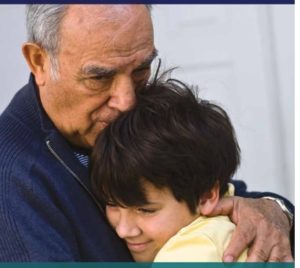 In Loving Arms: The Protective Role of Grandparents and Other Relatives in Raising Children Exposed to Trauma
In Loving Arms: The Protective Role of Grandparents and Other Relatives in Raising Children Exposed to Trauma
Grandparents and other relatives who step in to care for children, play an important role in mitigating trauma, which children in the child welfare system experience at starkly higher rates than the general population. Read the 2017 State of Grandfamilies in America Annual Report, from Generations United, download the infographic, or download the flyer about the report, at:
https://www.gu.org/resources/the-state-of-grandfamilies-in-america-2017/
My Anxiety Plan (MAP) for Post Traumatic Stress Disorder (PTSD)
This resource puts forth strategies for parents to use with their child as s/he begins to tackle post traumatic stress disorder (PTSD). The strategies are best used for children with mild-moderate signs of this type of anxiety. For children with more severe symptoms or who have been diagnosed with PTSD, treatment with a mental health professional is recommended, although MAP strategies can be used at home to support the child’s therapy work.
https://www.anxietybc.com/parenting/my-anxiety-plan-post-traumatic-stress-disorder-ptsd
Helping Traumatized Children: A Brief Overview for Caregivers
This easy-to-read guide (17 pages) is designed for caregivers (including parents and day care). Much information is provided in a Q&A format; the guide also includes a special section on infants and trauma. From the Child Trauma Academy.
https://www.childtrauma.org/_files/ugd/aa51c7_237459a7e16b4b7e9d2c4837c908eefe.pdf
Webpage | PTSD Basics (Includes many resources in Spanish)
This webpage of the National Center for PTSD offers multiple articles, flyers, and other resources that will help visitors connect with the network of professionals to help.
https://www.ptsd.va.gov/understand/what/ptsd_basics.asp
The Value of Resiliency
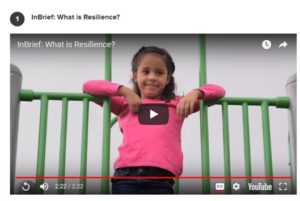
InBrief | The Science of Resilience
This 2-page fact sheet summarizes what science is revealing about the nature of resilience and 5 factors that contribute to children’s ability to cope with setbacks and adversities. From the Center on the Developing Child at Harvard University.
https://developingchild.harvard.edu/wp-content/uploads/2015/05/InBrief-The-Science-of-Resilience.pdf
Videos on Resilience | 3 from the Center on the Developing Child at Harvard
Great for showing to staff and families, each video is less than 2:30 minutes long. Titles are: (1) What is Resilience? (2) The Science of Resilience; and (3) How Resilience is Built.
https://developingchild.harvard.edu/resources/inbrief-resilience-series/
Resilience Guide for Parents and Teachers
Building resilience — the ability to adapt well to adversity, trauma, tragedy, threats or even significant sources of stress — can help our children manage stress and feelings of anxiety and uncertainty. This online guide from the American Psychological Association includes 10 tips for building resilience in children and teens, and takes a brief look at what supports development of resilience in preschoolers, in middle schoolers, and in high school students.
https://www.apa.org/topics/resilience/guide-parents-teachers
Info in Spanish and Other Languages
Traumas: Información y Consejos para Niños y Adultos
(Trauma: Brief Facts and Tips for Children and Adults)
This 1-page resource in Spanish shares the warning signs of trauma, signs of strong emotional reactions, and resources for additional support. From the National Association of School Psychologists. (PDF, 307 kb)
http://www.nasponline.org/x39783.xml
Entendimiento del Estrés Traumático Infantil: Una Guia para Padres
(Understanding Child Traumatic Stress: A Guide for Parents)
This tip sheet offers parents information about child traumatic stress (CTS), the best way to treat CTS, what parents can do at home for their children, and how parents can make sure their children receive support at school.
https://www.nctsn.org/resources/entendimiento-del-estres-traumatico-infantil-una-guia-para-padres
En Breve| El Impacto de la Adversidad Durante la Infancia Sobre el Desarrollo de los Niños
(The Impact of Early Adversity on Children’s Development)
This 2-page article summarizes research on the impact of adversity on children and the enormous importance of early intervention and stable supporting relationships.
https://developingchild.harvard.edu/wp-content/uploads/2015/07/04_EL-IMPACTO-DE-LA-ADVERSIDAD-3.pdf
Señales de Trauma en los Niños
(Signs of Trauma in Children)
After a disturbing event or tragic loss in the lives of children, parents and teachers do their best to help kids cope with their grief and anxiety in a healthy way. This article from the Child Mind Institutes provides tips on how best to engage kids in a calm and supportive dialog about their feelings. It’s also important to recognize the signs of unhealthy coping that would suggest a visit with a professional might be needed.
https://childmind.org/article/senales-de-trauma-en-los-ninos/
Separación Traumática, Niños Migrantes y Refugiados: Consejos para Padres, Cuidadores Primarios y Proveedores
(Traumatic Separation and Refugee and Immigrant Children: Tips for Current Caregivers)
This 3-page tip sheet provides tips for current caregivers and others to help address the needs of immigrant and refugee children who have experienced traumatic separation. It also outlines what children of different ages might be experiencing and how caregivers and others can help.
https://www.nctsn.org/resources/separacion-traumatica-ninos-migrantes-y-refugiados-consejos-para-padres-cuidadores
Translated Safety and Crisis Resources
Visit the National Association of School Psychologists webpage for crisis resources in many different languages, including Amharic, Arabic, Chinese, French, Korean, Kurdish, Somali, Spanish, and Vietnamese.
http://www.nasponline.org/resources-and-publications/resources/school-safety-and-crisis/translated-safety-and-crisis-resources
Center for the Study of Traumatic Stress (CSTS)
In addition to its English-language fact sheets, the Center offers many in Spanish, Mandarin Chinese, and Japanese.
Spanish | https://www.cstsonline.org/fact-sheet-menu/translated-fact-sheets/spanish
Mandarin Chinese | https://www.cstsonline.org/fact-sheet-menu/translated-fact-sheets/mandarin-chinese
Japanese | https://www.cstsonline.org/fact-sheet-menu/translated-fact-sheets/japanese
National Child Traumatic Stress Network
Dozens of fact sheets and other resources in Spanish here! Scan through the long list and select those articles that address the aspect of childhood traumatic stress relevant to your situation: disasters, traumatic separations, leaving the hospital, materials for youth, coping with school shootings, and much more. If you click on the drop-down menu labeled Spanish, you’ll also find a small selection of resources in other languages (e.g., Russian, Chinese, Korean, Armenian, to name a few).
https://www.nctsn.org/resources/informacion-en-espanol
_____________________________________________________________________
Which part of this Resource Collection would you like to visit now?
Return to the Resource Collection landing page
Resource Collection | Basic Information about Trauma (you’re here already)
Resource Collection | What is Trauma-Informed Care?
Resource Collection | Trauma and Specific Populations
Resource Collection | Building Trauma-Informed Schools
Resource Collection | Responding to Disasters


